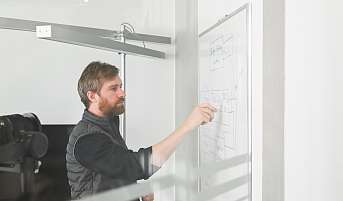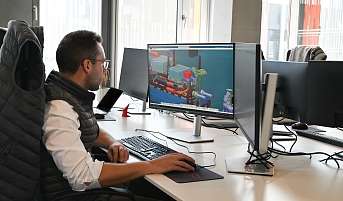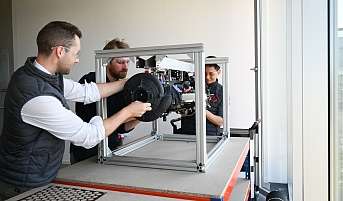The Project:
The EFT-Hybrid-1x quickly attracted customers beyond the aviation industry. Due to its compact design, it is ideal for many uses including off-road vehicles.
The concept originated from utilizing the EFT-Hybrid-1x as a technology demonstrator for extending the range of an off-road vehicle. By doing so, the vehicle can attain an extended driving range, accommodating auxiliary loads connected during prolonged off-road operations.

Step 1 - Concept Phase:
In the concept phase, several challenges had to be addressed:
- Operating Strategy: An operating strategy had to be defined which allows to support all required operating scenarios of the hybrid powertrain.
- Voltage Conversion: Voltage conversion from 60V (original operating voltage of the EFT-Hybrid-1x) to 400V (voltage level of the offroad vehicle).
- Packaging: The packaging had to be adapted to fit into the given space available in the vehicle.
- Thermal Management: The thermal management of the EFT-Hybrid-1x had to be integrated with the thermal management system of the vehicle.

Step 2 - Design:
After the concept was defined, the relevant components had to be designed:
- Electronics: A junction and power distribution box were developed to accommodate the integration of the EFT-Hybrid-1x with the HV battery of the vehicle.
- Firmware Development: All relevant controllers, state machines, fault handling, and communication with the VCU (Vehicle Control Unit) were developed.
- Packaging: The packaging including all the relevant fixtures was designed in CAD.
- Harness: The power and signal harness was designed to fit for the given application.

Step 3 - Integration & Validation:
- Component Validation: Once all the individual components were designed they were individually validated for functionality.
- System Integration: All validated components were integrated into the full powertrain system.
- System Validation: The full powertrain system was validated for functionality and also for performance and long-term durability.
- Vehicle Integration & Validation: The validated powertrain was integrated into the vehicle (hardware, electronic, software), and the functionality of the powertrain as part of the entire system underwent a final validation.

Step 4 - Demonstration:
The final step was the actual drive testing and demonstration of the vehicle. All decision makers who got the chance to drive the vehicle were convinced of the technology. A full project success!

